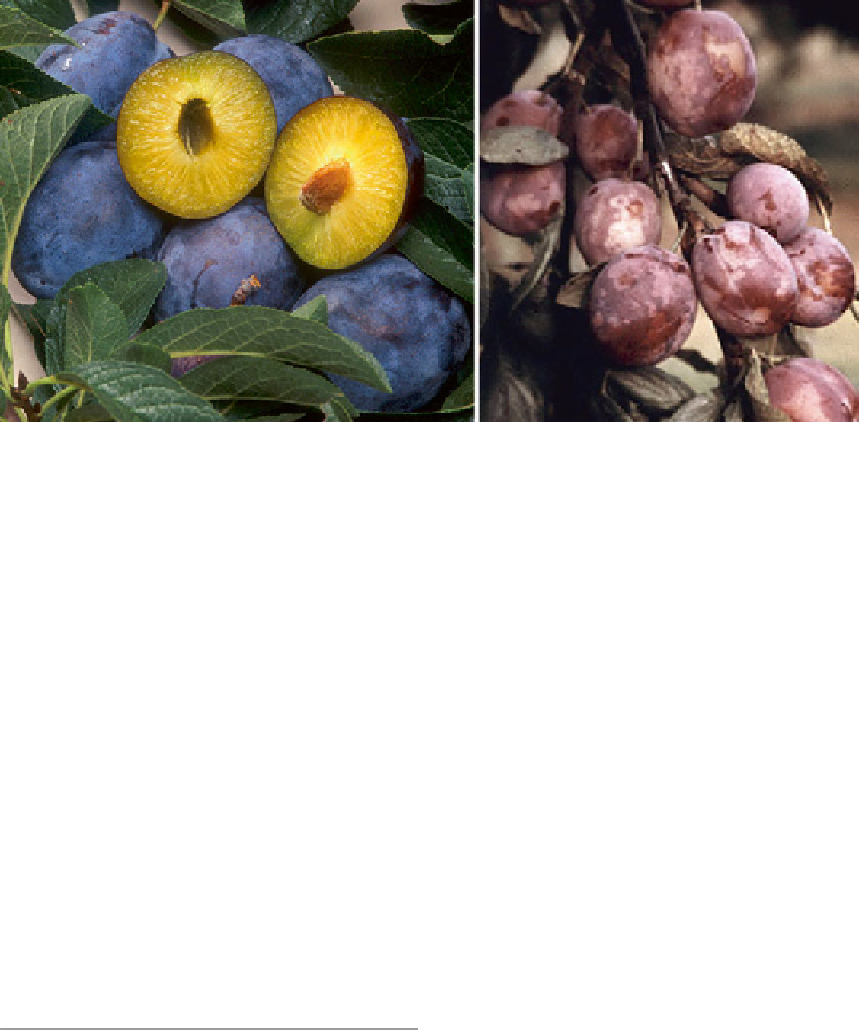Agriculture Reference
In-Depth Information
Fig. 8.6
Left
- C5 (variety Honey Sweet) genetically modifi ed plum resistant to plum pox virus.
Right
- severe symp-
toms of plum pox virus (PPV) infection on susceptible plum fruits
The transgenic bean could increase production
by 10-20 %.
The coat protein (CP) gene of cucumber
mosaic virus (CMV) was cloned into sweet pep-
per plants to confer resistance to CMV.
Transgenic rice lines with inducible production
of ethylene (ET) were generated by expressing the
rice ACS2 (1-aminocyclopropane-1-carboxylic
acid synthase, a key enzyme of ET biosynthesis)
transgene under control of a strong pathogen-
inducible promoter. The transgenic lines exhibited
increased resistance to a fi eld isolate of sheath
blight (
Rhizoctonia solani
) as well as different
races of blast (
Magnaporthe oryzae
).
Commercially available genetically modifi ed
crops for disease resistance are presented in
Table
8.4
(Castle et al.
2006
).
an assessment of how plant diseases will impact
on agricultural systems under climate change in
order to minimize loss to production and quality.
Outcomes from this research will have important
implications for decisions on amelioration and
mitigation strategies. Due to uncertainties in cli-
mate change predictions (IPCC
1996
), a “no
regrets approach,” where the proposed actions
have defi nite and quantifi able benefi ts, with or
without the effects of climate change factored in,
should provide the rationale for this research. An
example would be an improved understanding of
a disease cycle; this will enhance our capacity to
predict and manage the disease under current cli-
matic conditions in addition to improving our
capacity to respond to climate change.
Climate change may have positive, negative,
or neutral impact on diseases. Research in this
area is as much about identifying new opportuni-
ties as preparing to minimize negative impacts.
Success will require an improved understanding
of the causes, impacts, and consequences of cli-
mate change from which will evolve ameliora-
tion and mitigation strategies. The shortage of
critical epidemiological data on individual plant
diseases needs to be addressed using experimen-
tal approaches. In the fi rst instance, studies in a
controlled environment may be used to formulate
8.11
Future Prospects
As a discipline, plant pathology is dedicated to
ensuring sustainable production in agricultural
systems through the management and improve-
ment of plant health. In the foreseeable future,
global climate change will impact on plant health
and its management to infl uence productivity.
The role of plant pathologist must be to provide

Search WWH ::

Custom Search